Renowned photographer Jean-Pierre Rey used the lockdown to explore his home town of Menton, showing a very different side of the usually busy Rivieran town
When Covid lockdown struck in France, busy lives were literally stopped from one minute to the next. No one knew what lay ahead or how long it would last. Everyone was forced to develop their own coping mechanism for what was an unprecedented period of inactivity. But despite the imposed restrictions, it actually turned out to be a very fruitful time for many, and especially artists. Among them: Jean-Pierre Rey whose international career as a news photographer and documentary maker has taken him to the four corners of the globe to capture events of historic dimensions. When his home town of Menton was locked down for 55 days from March 17 through May 11, he did what came naturally to him: jumping into action to immortalize this unique moment in time. The result is a (mostly black and white) photo book which has just appeared under the title “Menton Confinement 55 jours pour l’histoire“
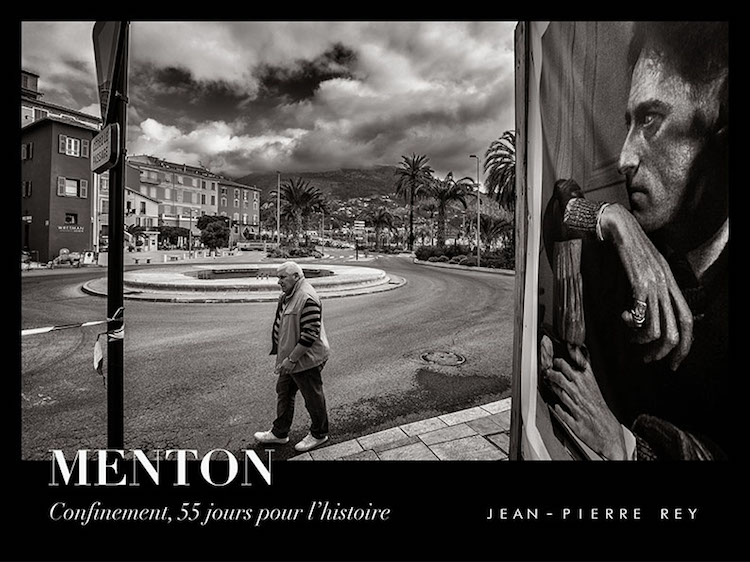
Nicknamed “the Pearl of the Riviera”, Menton is a genteel town of 30,000 nestled up to the Italian border on a narrow sliver of land between the Mediterranean Sea and the steeply rising Alps. Its uniquely well-preserved Italianate architecture spans from medieval times to the Victorian era. It may be less overrun with tourists than Monaco, a mere 10 kilometers down the road, or Nice, which is 30 km away, but it does have four gems that make it worth more than just a detour: its internationally renowned Cocteau museum, its festival of classical music which year after year attracts the crème de la crème of musicians, the Mirazur restaurant, voted the world’s best by leading food critics and guides, and the annual must-see Festival du Citron.
Menton is also home to Jean-Pierre Rey who returned back here three years ago after a professional lifetime of photographing wars, earthquakes, and other calamities for newspapers and magazines like Le Monde, Le Figaro, or Paris Match, among many others. When lockdown was announced, he witnessed his pleasantly bustling small town go eerily silent within a day.
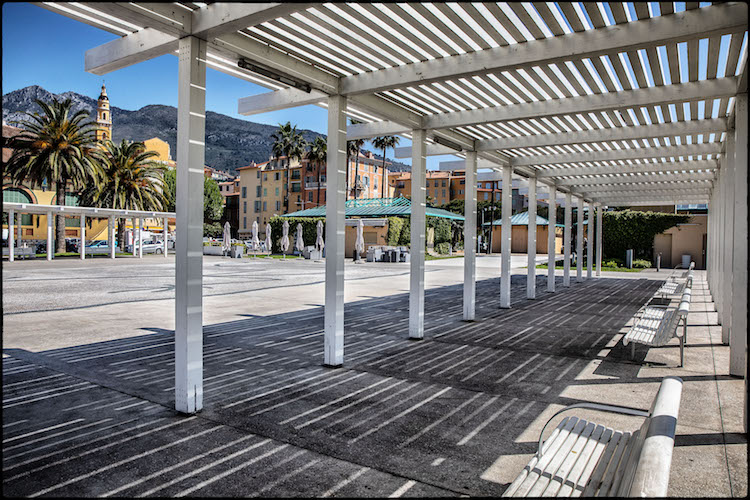
It took him a few days to overcome his trepidation but then he ventured out into abandoned streets, empty markets, and places suspended in time, with hardly another human to be seen. One old man whom he met and talked to on one of his morning excursions told him that this kind of anxiety had not been felt since the Second World War. Jean-Pierre Rey though soon started seeing a different facet: “There was a certain kind of poetry to the stillness and the empty space.” And with his photographer instinct, he captured this moment in time in a series of 1,000 photos. Turning them into a book was still far from his mind though.
For almost the entire 55 days of lockdown, Jean-Pierre roamed Menton’s abandoned markets, beaches, and squares. He saw the lone policeman guarding a void, the senior citizen trying to find food, the storekeeper waiting in vain for customers. He saw an empty vessel of what until just a few days or weeks ago was a town filled with life just a couple of days or weeks before. And then, gradually, the fleeting idea of turning his material into a book started taking shape. He compiled 60 of his most poignant images, complementing them with quotes or poetry, into a photo book documenting those unique 55 days.
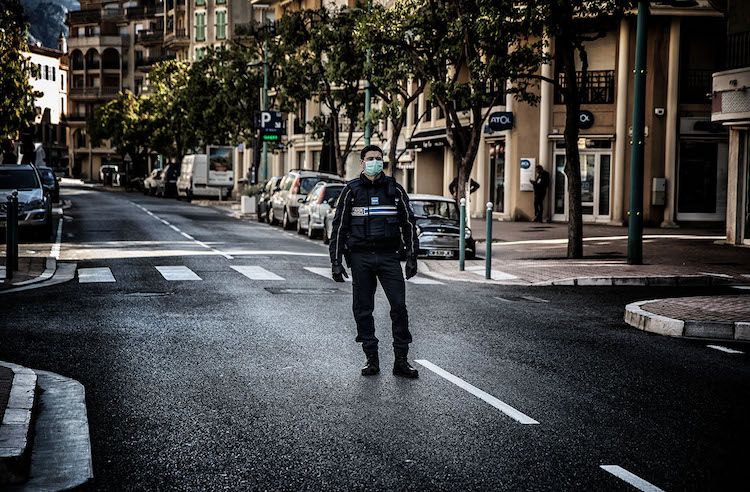
Jean-Pierre’s gift of framing words as perfectly as his images is the red thread that connects his visual journey. “Write with a picture, with a photograph. I am caught in the middle of this abandonment, of a dilemma that no longer affects me… I’ve found meaning in what I do best: writing with the tears of joy and sadness that my soul, without consulting me, has decided to impose on me in order to exist. The fragile equilibrium of a madman necessarily passes through what his soul imposes on him. An image, a glance, an architecture which serves for naught, a passage that time imposes on us when we wander in the street to find the meaning of who we are…” he writes, questioning the boundaries between sanity and madness, between reality and make-believe. And indeed, look closely and in what appears to be wasteland you will see emptiness and depression juxtaposed with a promise of hope and eternity in each image.
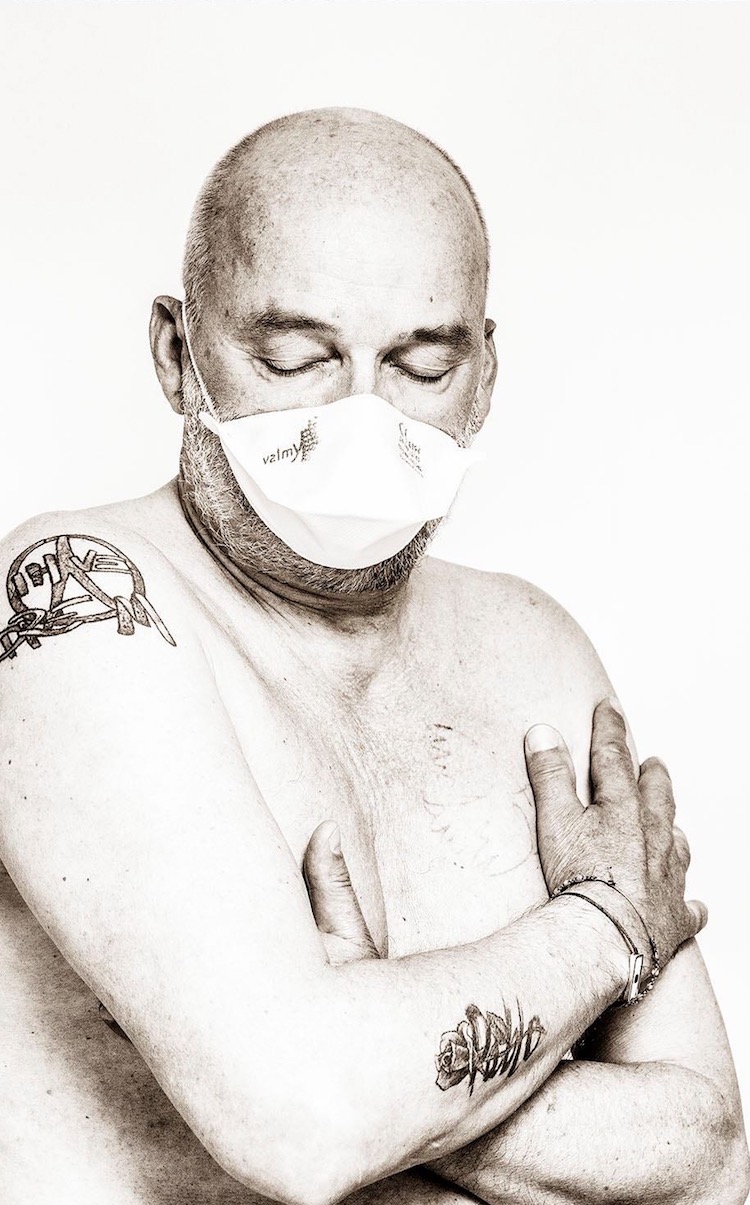
The book also touches, however briefly, on the personal mental rebellion that everyone who was locked down, anywhere in the world, must have gone through to some extent: “How do I get past this? What can I do? Who am I deep down?” Jean-Michel’s introspection led him to one of his peers, the immortal Helmut Newton whose portrays so aptly captured a person’s essence, be it that of others, be it himself. Jean-Pierre therefore decided to follow in the great photo artist’s footsteps, creating a bold auto portrait which in its bluntness and messages between the lines is representative, in many ways, of the portrait of Menton in lockdown he produced.
But there was one place in town that captured his interest in a particular way: the famous Palmosa hospital. He obtained permission to spend several days there to document the work of health workers, and even to accompany staff during a night at the ICU, properly suited up of course. Seeing the immense physical and mental load put on doctors, nurses, techs, and anyone working there, Jean-Pierre also paid a special tribute to the Palmosa hospital and its staff by dedicating a special section of his book to them.
As it happens, the Palmosa hospital is also where Dr. Khaled Youssef works – the French-Syrian surgeon and artist whose own photo books and poetry have made it around the world. So nothing appeared more logical to Jean-Pierre than asking Khaled to write a foreword, explaining “life” from the point of view as a doctor but also a creative, a thinker, an observer, and a philosopher. And true to form, Khaled did: [English translation available here]
« Une Journée à l’Hôpital »
Déambuler dans les couloirs d’un hôpital est une expérience bouleversante, tant pour la dureté d’un quotidien rempli de maux que pour le courage et le dévouement des soignants à lutter contre la fragilité de notre existence.
C’est un océan d’humanité où les déferlements des pas et les turbulences des mouvements ne prennent jamais fin, pour faire échouer les corps et les âmes sur la tranquillité des rivages et ramener la vie au port de l’apaisement.
Dans ces couloirs interminables on peut suivre les regards qui reflètent les états d’âme, aux couleurs sombres de douleur, lumineuses de soulagement, et joyeuses de satisfaction. On y observe des silhouettes dans les nuances du blanc et du bleu aux traits marqués souvent par la fatigue, mais la lumière dans les yeux n’est jamais éteinte, car l’esprit est en vive effervescence, cherchant continuellement une voie de guérison.
Des urgences à l’hospitalisation, de la radiologie à la consultation, sans oublier les soldats méconnus ; à la blanchisserie, la cuisine, le service technique… tous ceux qui participent à rendre vivant ce temple de soins où les prières à la vie prennent forme dans les actes utiles, et les miracles sont les fruits d’une détermination humaine à combattre la souffrance.
Les mains éclaboussées de liquides corporels et chimiques, vagabondent dans des chemins ordonnés pour dessiner un aspect meilleur au moment d’après, et l’alphabet des gestes raconte une histoire de lutte incessante contre les aléas de la vie.
Aux moments critiques les pas ne traînent pas et entraînent un tourbillon de manœuvres, à croire qu’ils se démultiplient dans l’espace, dressant l’arche d’espoir où abriter les patients et les amener vers la quiétude.
Une journée à l’hôpital est un moment hors du temps, une parenthèse qui donne une dimension sacrée à la vie. La dualité lumière / obscurité se côtoie dans chaque coin de ce lieu indispensable à la société. Les néons qui se substituent à la lumière du jour n’empêchent pas de visualiser un ciel et un espoir dans l’horizon, d’une guérison, d’un apaisement, ou d’un doux prolongement de vie.
Les soignants, ces “héros”, comme on les appelle depuis peu, n’ont pas attendu une crise ni une guerre sanitaire pour se vouer à une vocation ô combien éprouvante et un métier indiscutablement essentiel et désespérément mal considéré.
Leur « super pouvoir » renaît chaque jour d’une volonté solide, d’un sens du devoir, et d’une détermination à vaincre les maladies ou au moins à apporter un soulagement, avec la conscience comme maître à bord de ce bateau qui traverse tous les jours les eaux troubles du destin.
Vivre une journée à l’hôpital, c’est s’imprégner d’une réalité qui inspire une prise de conscience et un attachement renforcé à la vie, c’est être spectateur dans un théâtre de réalisme où les rideaux se lèvent chaque jour sur une des scènes multiples et entremêlées d’un combat quotidien rempli de quêtes à explorer, d’espoirs suspendus, de murmures et de cris, de larmes et de sourires, de bruit salvateur et de silence éloquent.
En regardant de plus près, il y a, dans l’intimité de cette atmosphère embrumée, quelque chose de divin tout en étant profondément humain, cette humanité solidaire, dévouée, juste, et avant tout bienveillante qui irradie d’attention et aspire à effacer la souffrance, armée d’un savoir unique durement obtenu qui repousse les frontières de la peur pour dissiper la brume des douleurs et visualiser un horizon plein d’espoir pour que le rêve soit solide et que la vie soit concrète.
At this time, Jean-Pierre Rey’s beautifully curated book is only available in local bookstores or online but it is definitely one of the most beautiful, eloquent, and unique oeuvres by any Rivieran artist memorializing this period, and merits wide distribution.
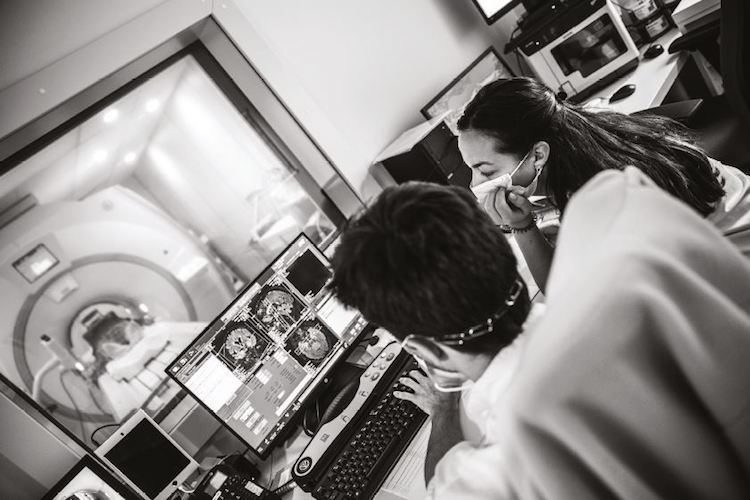
![]()
All photos courtesy and © Jean-Pierre Rey


Leave a Reply